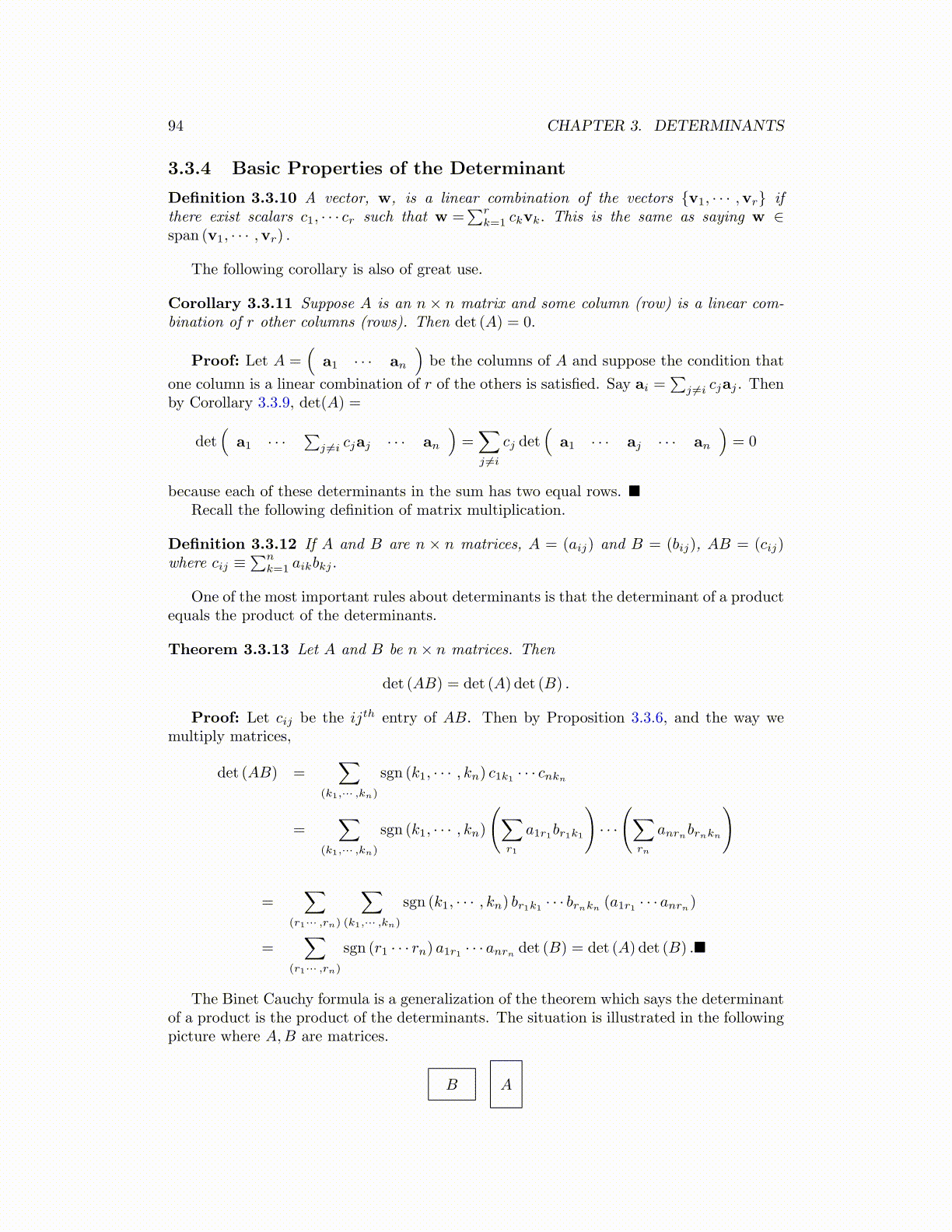
94 CHAPTER 3. DETERMINANTS
3.3.4 Basic Properties of the Determinant
Definition 3.3.10 A vector, w, is a linear combination of the vectors {v1, · · · ,vr} ifthere exist scalars c1, · · · cr such that w =
∑rk=1 ckvk. This is the same as saying w ∈
span (v1, · · · ,vr) .
The following corollary is also of great use.
Corollary 3.3.11 Suppose A is an n × n matrix and some column (row) is a linear com-bination of r other columns (rows). Then det (A) = 0.
Proof: Let A =(
a1 · · · an
)be the columns of A and suppose the condition that
one column is a linear combination of r of the others is satisfied. Say ai =∑
j ̸=i cjaj . Thenby Corollary 3.3.9, det(A) =
det(
a1 · · ·∑
j ̸=i cjaj · · · an
)=∑j ̸=i
cj det(
a1 · · · aj · · · an
)= 0
because each of these determinants in the sum has two equal rows. ■Recall the following definition of matrix multiplication.
Definition 3.3.12 If A and B are n × n matrices, A = (aij) and B = (bij), AB = (cij)where cij ≡
∑nk=1 aikbkj .
One of the most important rules about determinants is that the determinant of a productequals the product of the determinants.
Theorem 3.3.13 Let A and B be n× n matrices. Then
det (AB) = det (A) det (B) .
Proof: Let cij be the ijth entry of AB. Then by Proposition 3.3.6, and the way wemultiply matrices,
det (AB) =∑
(k1,··· ,kn)
sgn (k1, · · · , kn) c1k1· · · cnkn
=∑
(k1,··· ,kn)
sgn (k1, · · · , kn)
(∑r1
a1r1br1k1
)· · ·
(∑rn
anrnbrnkn
)
=∑
(r1··· ,rn)
∑(k1,··· ,kn)
sgn (k1, · · · , kn) br1k1· · · brnkn
(a1r1 · · · anrn)
=∑
(r1··· ,rn)
sgn (r1 · · · rn) a1r1 · · · anrn det (B) = det (A) det (B) .■
The Binet Cauchy formula is a generalization of the theorem which says the determinantof a product is the product of the determinants. The situation is illustrated in the followingpicture where A,B are matrices.
B A